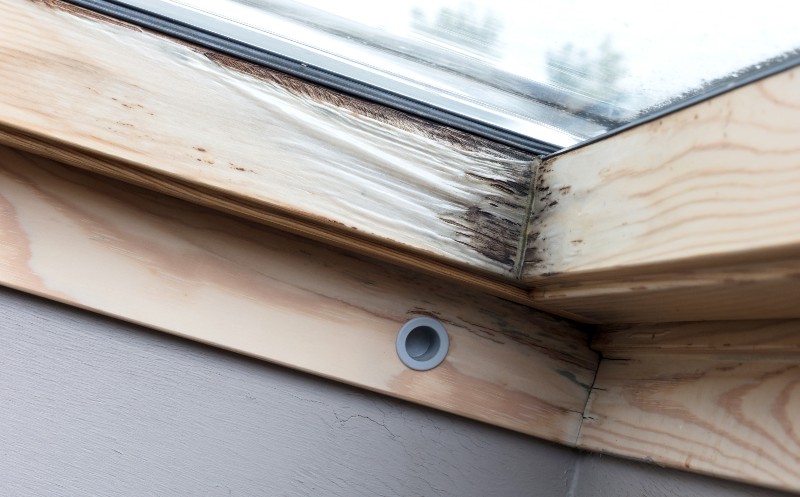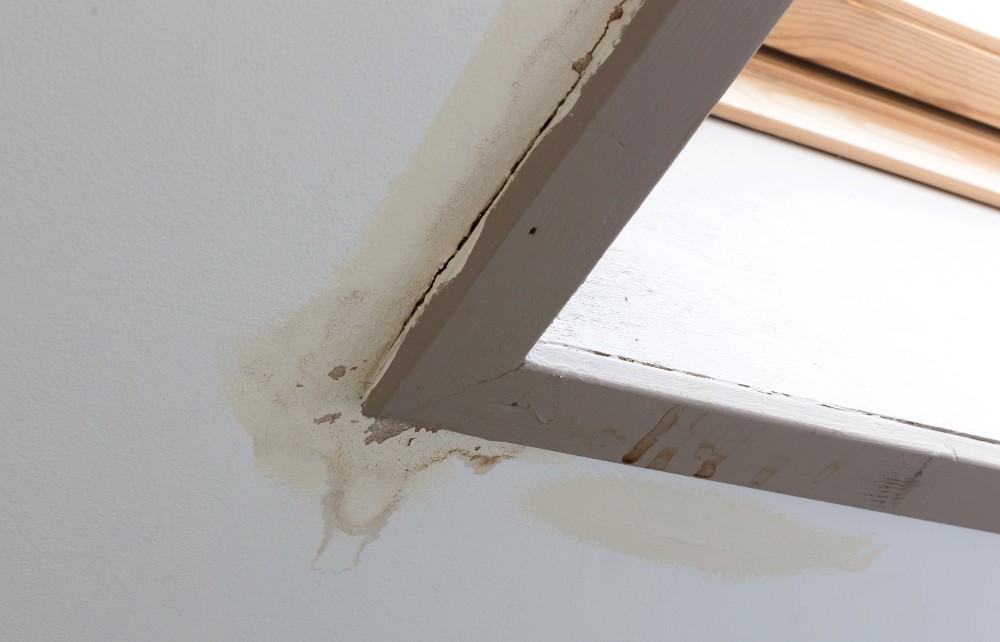You might think that rain and snow are the only causes of water leaks on your roof.
The reality is that roof condensation is a major problem for home and business owners throughout Colorado, especially during the colder months. This sneaky natural phenomenon can happen with very few signs of development, and unless you know what to look for, costly damages can happen in mere weeks.
So, what is roof condensation? How can you check for it? What can be done to prevent it? The roofing experts at A-to-Z Roofing & Exteriors are here to answer all of these questions in this article.
Roof Condensation, Defined
If you’ve ever poured a cold beverage into a glass on a hot day, you’ve probably noticed the formation of small drops of water on the outside of the glass. This is an example of condensation, and it’s what happens when water vapor in the air is ‘condensed’ into liquid because of a significant temperature difference.
The same thermodynamic cause is at play when condensation forms on your roof. When the temperature outside differs enough from the temperature inside, and when there isn’t sufficient enough attic air ventilation to dissipate warm-air water vapor, condensation can form.
Here’s an example. Let’s say the temperature outside your home is 45 degrees fahrenheit, and the temperature inside is a comfy 70 degrees. If the water vapor contained in your indoor air makes its way to an exterior surface (i.e., through your roof), the vapor is going to condense into water droplets.
Detecting Roof Condensation
Interior roof condensation often shows up on roof sheathing located in the attic. Exterior roof condensation appears as water droplets that form on the roof shingles themselves. However it forms, roof condensation will often permeate any material that composes the overall roofing system, including underlayment and structural supports.

Often, roof condensation is misidentified as a roof leak, which is an understandable error. Only a trained roofing professional can tell the difference, and sometimes, a thorough inspection of the attic, its ventilation system, and the exterior of the roof is needed to arrive at a roof condensation diagnosis.
What Can be Done about It?
There are numerous causes for roof condensation, and they typically reveal themselves in the colder months as the difference between indoor and outdoor temperatures gets bigger and bigger.
Some of these causes include:
- Improperly vented bathrooms
- Poor attic insulation (especially around doors or crawl space portals)
- Stagnant, warm attic air
- Sources of moisture like a damp basement or incorrectly sealed plumbing fixtures
Once a roof condensation problem has been detected, the next obvious question is what to do about it. The answer will be related to the cause of the condensation. If bathrooms are not being vented to the exterior of the home, they will need to be re-vented. If the air in the attic is too warm and moist, a ventilation system may need to be installed.
Alternatively, the use of a vapor barrier may be the most successful solution. Vapor barriers can be expensive to install, but they do a great job of sequestering the indoor living space air vapor from that of the attic.
Remember that the air in your attic should be as close to exterior air temperature as possible while being as dry as possible. So, installing a dehumidifier in the attic and adding a vapor barrier at the same time could be the ‘silver bullet’ for some roof condensation issues.
Roof Venting
Thankfully, there are some enhancements that can be made to your roof that can help reduce the formation of roof condensation. These include:
- Soffit vents
- Ridge vents
- Solar-powered attic fans
- Mushroom vents
When a roof is properly vented, the air in the attic is kept at a temperature and humidity level that is ideal to prevent the formation of roof condensation. A modest investment into roof venting often translates into huge cost savings through the prevention of damaging roof condensation in the fall, winter, and spring.
For Expert Solutions to Common Roof Problems, Contact A-to-Z Today
Colorado has a challenging climate. Our wild temperature swings and unpredictable bouts of precipitation make it difficult to maintain adequate home and business defenses against the elements.
Thankfully, the pros at A-to-Z Roofing & Exteriors are here to help by providing the high-quality materials and industry expertise you need for peace of mind throughout the year.
If you have roofing questions, we have answers! Contact us today; we’ll be happy to help.
For more winter roofing tips, be sure to read our blog on winterizing your commercial roof.

